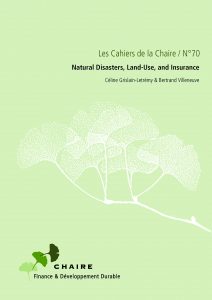 by Céline Grislain-Letrémy & Bertrand Villeneuve
by Céline Grislain-Letrémy & Bertrand Villeneuve
This paper addresses the urbanization of areas exposed to natural disasters and studies its dependency on land-use and insurance policies. The risk-map paradox that we describe explains why an insurance system with simplistic maps and tariffs is the rule. Indeed, in practice we observe simple policies, consisting of a prohibited red zone and a zone without insurance tariff differentiation. We show that they implement the optimal land-use in specific cases. Even if there are fixed damages per dwelling, the red-zone policy is relatively efficient. In a central proposition, we detail the effects redefining the optimal red zone as the climate or the population changes. We use this analysis to expose and comment plausible cases in which, as the population grows, the red zone shrinks, the red zone grows, and the red zone shrinks and then grows.
